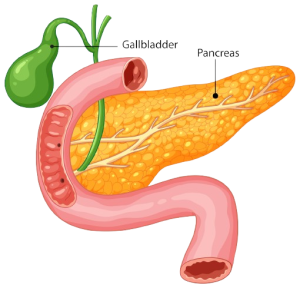Services
Laparoscopic Pancreatic Resection

This is a surgery done through small cuts in the belly to remove part or all of the pancreas. It’s used to treat problems like pancreatic tumors, cysts, or long-term inflammation of the pancreas. The surgeon uses a tiny camera and special tools to do the operation without making a big cut.
Indications for Surgery:
Pancreatic Tumors: This includes both cancerous and non-cancerous growths in the pancreas.
Pancreatic Cysts: Some fluid-filled sacs that can cause symptoms or may turn cancerous.
Chronic Pancreatitis: Long-term inflammation that causes pain or other problems.
Types of Surgery:
Distal Pancreatectomy: Removes the left side of the pancreas. The spleen may also be removed.
Whipple Procedure: Removes the head of the pancreas along with parts of the stomach, small intestine, bile duct, and sometimes the gallbladder.
Total Pancreatectomy: Removes the whole pancreas (less common).
Procedure:
Anesthesia: You’ll be asleep and won’t feel any pain.
Small Cuts: The surgeon makes 4 to 6 small cuts in your belly.
Camera Inserted: A tiny camera shows the inside of your body on a screen.
Removing the Pancreas: Special tools are used to remove the part of the pancreas that is causing problems.
Reconnecting Things: If needed, the surgeon reconnects parts of your digestive system to help it work properly.
Closing the Cuts: The small cuts are closed with stitches or surgical glue.
Advantages of Laparoscopic Colorectal Resection:
Smaller Cuts: Means less pain, smaller scars, and faster healing.
Faster Recovery: You can go home sooner and feel better faster.
Lower Risk of Infection: Smaller cuts reduce the chance of infection.

